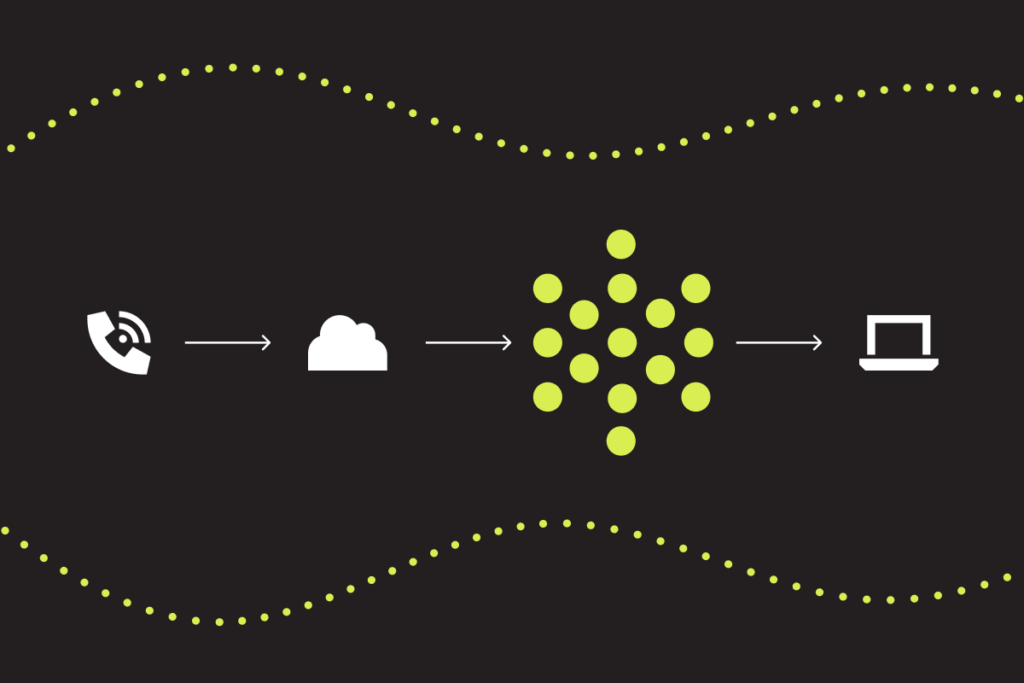Table of Contents
As consumers, we’ve come to expect the convenience of digital self-service when we interact with a brand. Whether transferring money between accounts, checking in at a hotel, or making a restaurant reservation, we usually have the option to handle the process on our own.
To meet this demand, companies have heavily invested in digital self-service solutions like chatbots, FAQ pages, mobile apps, customer portals, and knowledge bases. These solutions are meant to enhance customer engagement and allow users to resolve issues and complete transactions without talking to a representative.
What is digital self-service?
Digital self-service lets customers perform tasks or access information without the need for human assistance. It improves the customer experience by making processes more efficient and helping businesses save on staffing costs.
Many companies have fully embraced digital self-service to streamline processes, improve the customer journey, and increase customer loyalty by enabling customers to manage routine tasks such as order tracking, account management, bookings and reservations, check-in services, and bill payments.
To deliver effective self-service, the information you provide needs to be easily accessible and kept up to date, and the user experience needs to be easy. Outdated and clunky self-service channels result in confused and frustrated customers who use the phone to resolve their problems instead.
Why your CX should offer digital self-service
Answering FAQs and carrying out routine tasks on customers’ behalf can take up a lot of your agent’s time.
For one of PolyAI’s hospitality clients, 40% of calls about routine queries like re-sending booking confirmation had the potential to be automated or deflected to online channels but were being handled by a busy front desk. Implementing a conversational voice assistant enabled the business to automate 31% of these customers without any input from an agent.
67% of customers say they prefer self-service over speaking to a company representative. When self-service channels are implemented effectively they can offer a number of benefits to your organization.
1. Support agent productivity and retention
Enabling customers to self-serve gives agents more time to focus on customers with complex requests. Instead of serving a long queue of frustrated customers with repetitive queries, agents can engage in meaningful work, making their workload more manageable, and their experience at work more enjoyable.
2. Improved 24/7 experience
Your customer’s needs don’t follow your contact center’s operating hours, and they expect to get answers when needed. Staffing your contact center around the clock is costly, and self-service channels can bridge the gap.
Digital self-service enables your customers to access information, resolve issues, and complete transactions at any time without waiting for your agents to return online.
3. Call center cost savings
Running a contact center is expensive, especially when hiring and training new agents. Digital self-service options, such as conversational voice assistants, can significantly reduce the volume of calls that require agent assistance.
Automating routine inquiries and transactions can lower operational costs while maintaining high service standards. The result is a leaner, more efficient contact center that saves money without compromising customer experience.
Golden Nugget implemented a PolyAI voice assistant in their contact center to handle everything from FAQs to reservations and process credit card payments. The voice assistant handles over 30% of those calls, reducing staffing by 30%.
4. Peak and seasonal demand handling
During busy times or seasonal rushes, your contact center can get flooded with calls and requests. Not all peaks in demand are expected, and it’s not always possible to be prepared for them.
Digital self-service options can help handle call spikes by taking care of routine inquiries and simple tasks, freeing up your agents to deal with more urgent requests, keeping your service running smoothly even when demand is high. Customers also appreciate not having to wait in long queues, which leads to a better overall experience.
Explore eight key metrics that provide meaningful insight into the impact of call center voice AI.
Get the guideHow to effectively use AI for digital self-service
Despite having various self-service options, many customers still prefer to call because it’s familiar; they need to explain their problem in detail, their issue isn’t covered by general FAQs, or their query is urgent.
AI-powered voice assistants help connect your phone and digital channels, allowing your contact center to serve customers more efficiently and improve key metrics like first contact resolution (FCR) and customer satisfaction (CSAT) scores. A voice assistant can either handle the entire call or send an SMS with a link to online resources, making it easier for customers to find answers and reduce the number of routine calls your agents need to manage.
1. Identify key touchpoints where self-service can be most effective
The types of calls that are best suited for self-service will depend on your industry. For instance, hotels might direct routine questions like check-in times, parking details, and room amenity queries to self-service channels.
Using an AI voice assistant, you can collect detailed data about when and why customers are calling and get a clearer understanding of customer expectations. This data helps you identify high-volume calls that can be automated, either entirely by a voice assistant or through other self-service channels.
2. Ensure smooth transition from the assistant to human agents when needed
Even with effective self-service options, there will be times when customers need to speak with an agent. It’s important to make your agent handover process as easy as possible. An AI voice assistant should be designed to recognize when a call requires assistance from an agent and transfer the call efficiently, with all key information gathered so far so the agent has context and can provide help without making the customer repeat themselves.
3. Use call data and customer insights to anticipate customer needs and offer proactive assistance
By analyzing customer data and identifying trends in real time you can anticipate common questions or issues before they arise. For example, if a high percentage of your call volume is about late check-out options, you can use this insight to offer the service to guests during each booking proactively. Voice assistants generate structured conversational data in real time, enabling you to proactively address customer questions, reduce the volume of incoming calls, and free up your team to handle more complex issues.
Unlock efficient and effective digital self-service with a PolyAI voice assistant
No matter how well-designed your digital self-service options are, there will always be customers who prefer to call. To effectively manage call volumes, customer-facing companies need to consider investing in AI-driven voice automation solutions.
Previous attempts at self-service over the phone channel have restricted customers to one-word answers. When customers don’t have the freedom to explain their issues in detail, they are misunderstood, misrouted calls increase, and your agent’s workloads increase.
Cutting-edge conversational AI
PolyAI voice assistants engage in customer-led conversation, giving every customer the freedom to:
- Tell long stories in their own words
- Ask clarifying questions at any point in the conversation
- Use regional slang, synonyms, and turns of phrase
- Be understood regardless of their accent, the quality of the phone connection, or background noise
We use spoken language understanding (SLU) technology to enhance speech recognition, which means our voice assistants can accurately understand what a caller is saying even when speech recognition fails to pick up every word.
Because if callers believe they can get a better answer from an agent, why shouldn’t they insist on speaking to one?
Recognized as one of the top trends in the hospitality industry, voice assistants can help increase guest satisfaction in hotels, restaurants, healthcare facilities and much more. Listen to the call recording below to hear how a PolyAI voice assistant handles a guest’s hotel reservation.
Capture more revenue
When your phone lines are clogged with customers making low-value calls (such as order tracking or FAQs), other customers making high-value, revenue-generating calls cannot get through.
PolyAI clients have reported as much as 60% of agent time is spent on routine queries that could be resolved through self-service channels. Beyond missing potential revenue, the phone is the most expensive channel, with a 3-4 minute call costing $2.70 to $5.60. This makes it even more critical to maximize the value of each call.
Implementing a conversational voice assistant to automate the low-value part of a call and enable customers to self-serve can decrease average handle time by 20-30% and give additional capacity to your call center.
Scalable customer support
Our voice assistants handle customer calls around the clock to resolve issues or take down information for agents to follow up on without the expense of maintaining a full-time contact center. This ensures customers get the help they need whenever they call, not just during business hours.
In addition to answering calls, PolyAI voice assistants can manage common transactions just like your agents by engaging in complex, multi-step conversations to resolve customer issues without needing to transfer the call.
Discover how PolyAI can help you enhance customer experience, streamline operations, and reduce costs with a conversational voice assistant.
Digital self-service FAQs
Digital self-service options include tools like chatbots, knowledge bases, and community forums, which offer quick access to information. Customers can also use mobile apps, online portals, and AI-driven voice assistants over the phone to manage accounts, make bookings, or find answers to FAQs.
When customers need help after using self-service options, it’s important to have a smooth handoff to a support agent. This means transferring all relevant information so the customer doesn’t have to repeat themselves, gathering key details during the self-service interaction, and making the transition seamless. Clear handoff protocols and ensure customers get the help they need quickly.
A self-service portal is an online platform that allows users to find information, access services, or solve problems on their own without needing to contact support or speak with a representative. It typically includes resources like FAQs, knowledge bases, forms, and tools for tasks like tracking orders or managing accounts. The goal is to give users more control and make it easier to handle routine issues independently.




